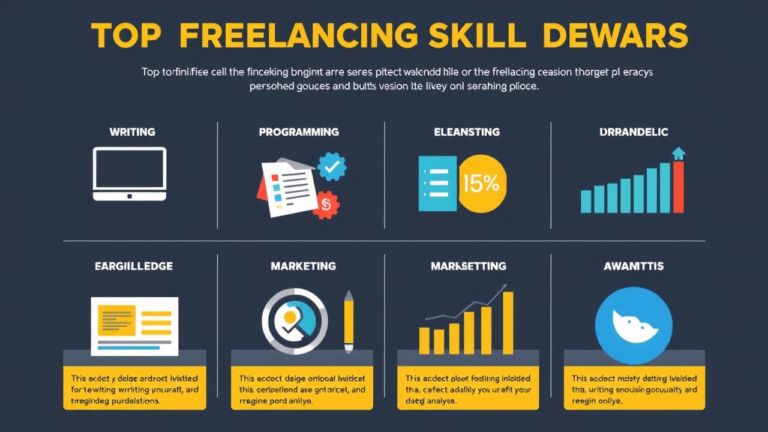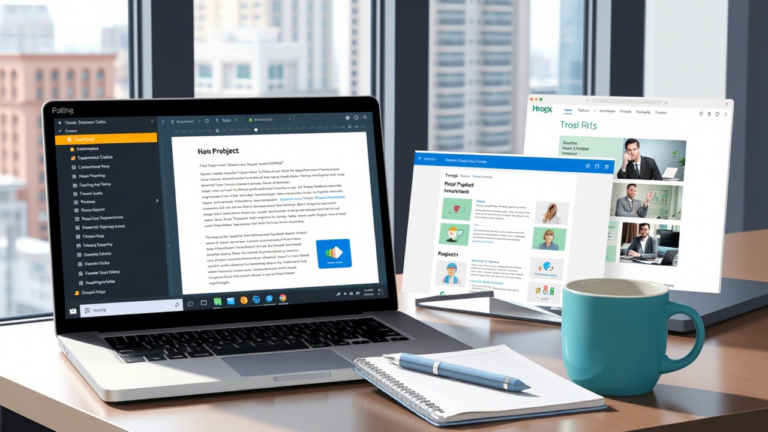How to Get Started in Graphic Design
Graphic design is a rewarding and creative freelancing job that offers flexibility, artistic freedom, and the potential for high earnings. Whether you’re a complete beginner or someone looking to transition into freelance graphic design, this step-by-step guide will help you launch your career and build a successful portfolio.
1. Understand the Basics of Graphic Design
Before diving into graphic design, it’s important to understand the fundamentals of the field.
- Learn Design Principles: Study concepts like balance, contrast, alignment, hierarchy, and color theory.
- Explore Design Styles: Familiarize yourself with different design styles, such as minimalism, retro, or modern.
- Understand Tools: Learn about the essential tools and software used in graphic design.
2. Choose Your Niche
Graphic design is a broad field, so choosing a niche can help you focus your efforts and stand out in the market.
- Popular Niches: Branding, web design, illustration, motion graphics, or packaging design.
- Assess Your Interests: What type of design excites you the most? What are your strengths?
- Research Demand: Look for niches with high demand and growth potential.
3. Learn Design Software
Mastering design software is essential for creating professional-quality work.
- Adobe Creative Suite: Learn tools like Photoshop (for photo editing), Illustrator (for vector graphics), and InDesign (for layouts).
- Other Tools: Explore alternatives like Canva, Figma, or CorelDRAW.
- Online Tutorials: Platforms like YouTube, Skillshare, and Udemy offer tutorials for beginners.
4. Build Your Skills
Graphic design requires a combination of technical and creative skills.
- Practice Regularly: Create personal projects or redesign existing materials to build your skills.
- Take Online Courses: Enroll in courses on platforms like Coursera, LinkedIn Learning, or Domestika.
- Join Design Communities: Participate in forums, Facebook groups, or Reddit communities to learn from others.
5. Create a Portfolio
A strong portfolio is your most important tool as a freelance graphic designer.
- Showcase Your Best Work: Include a variety of projects that demonstrate your skills and versatility.
- Start Small: If you don’t have client work, create mock projects or redesign existing brands.
- Use Portfolio Platforms: Websites like Behance, Dribbble, or Adobe Portfolio allow you to showcase your work online.
6. Set Up Your Freelance Business
Once you’ve built your skills and portfolio, it’s time to set up your freelance business.
- Choose a Business Name: Decide whether you’ll use your own name or create a brand name.
- Create a Website: A professional website helps you showcase your portfolio, services, and contact information.
- Set Your Rates: Research industry standards and decide how much to charge. Beginners may start with $20 to $50 per hour, while experienced designers can charge $75 to $150+ per hour.
- Payment Methods: Set up payment methods like PayPal, Stripe, or Wise to receive payments from clients.
7. Find Clients
Finding clients is one of the biggest challenges for freelance graphic designers.
- Join Freelancing Platforms: Sign up on platforms like Upwork, Fiverr, or 99designs to find clients.
- Network: Connect with potential clients on LinkedIn, attend industry events, or join local design communities.
- Cold Pitching: Reach out to businesses, startups, or agencies with personalized pitches.
- Ask for Referrals: Let friends, family, or former colleagues know about your services.
8. Deliver High-Quality Work
Your reputation as a graphic designer depends on the quality of your work and your professionalism.
- Understand Client Needs: Communicate clearly with clients to ensure you meet their expectations.
- Meet Deadlines: Deliver work on time to build trust and maintain strong client relationships.
- Be Open to Feedback: Use client feedback to improve your designs and build long-term relationships.
- Go the Extra Mile: Offer additional value, such as suggesting ideas for future projects or optimizing designs for different formats.
9. Market Yourself
Marketing is essential for attracting clients and growing your freelance business.
- Leverage Social Media: Use platforms like Instagram, LinkedIn, or Pinterest to showcase your work and connect with potential clients.
- Create a Blog: Share design tips, case studies, or industry insights to establish yourself as an expert.
- Collaborate with Others: Partner with other freelancers or businesses to expand your reach.
- Ask for Testimonials: Positive reviews from clients can help build your credibility and attract new business.
10. Stay Updated and Keep Learning
The graphic design industry is constantly evolving, so it’s important to stay updated with the latest trends and tools.
- Follow Industry Blogs: Read blogs like Creative Bloq, Design Week, or Smashing Magazine for insights and tips.
- Experiment with New Tools: Explore new software, plugins, or design techniques to enhance your skills.
- Adapt to Trends: Stay ahead of trends like 3D design, augmented reality (AR), or sustainable design.
- Continuous Learning: Take advanced courses or attend workshops to refine your skills and stay competitive.
Conclusion
Starting a career in graphic design as a freelancing professional is an exciting and rewarding journey. By understanding the basics, choosing a niche, building your skills, and marketing yourself effectively, you can establish a successful freelance graphic design business. Remember, consistency and continuous learning are key to thriving in this field. Start small, stay persistent, and watch your freelance design career grow. Take the first step today and unlock the potential of freelancing in the world of graphic design!






